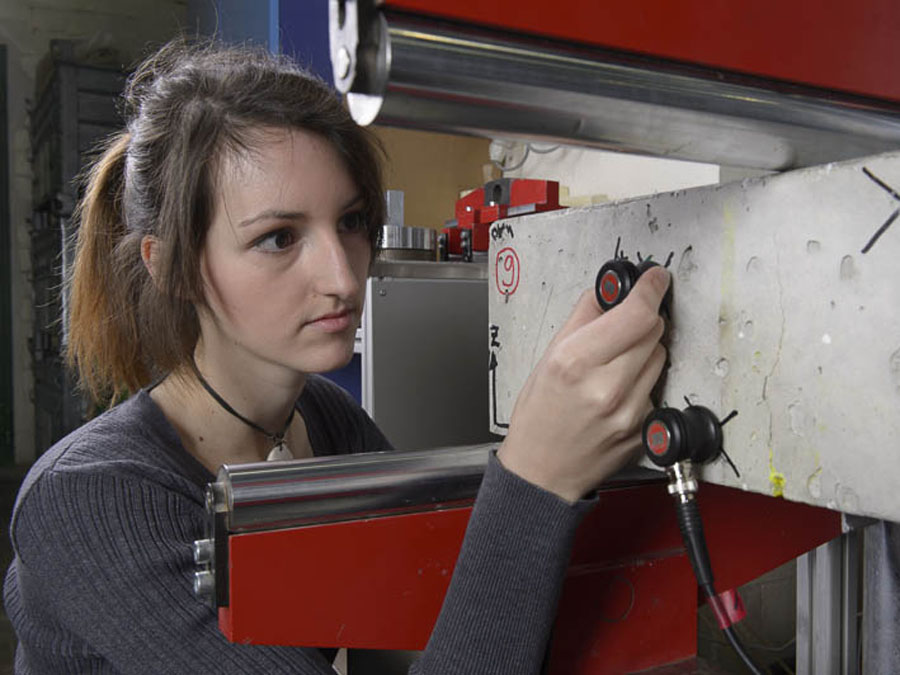Self-healing concrete to improve the durability of structures
HEALCON project develops innovative construction materials

Structures made of self-healing concrete have an inherent healing mechanism that becomes active when a crack appears, thus rendering manual crack repair completely obsolete. In order to obtain such automatic crack closure, HEALCON European project partners are investigating the use of polyurethane-based polymer resins, superabsorbent polymers and bacteria. At Technische Universität München, the efficiency of those three self-healing mechanisms is investigated. With the help of non-destructive testing methods, Prof. Christian Große’s group is assessing how cracks occur, how the healing agents are released and, finally, how efficiently they did their job in healing the cracks.
The first stage of this project has already yielded very promising results on laboratory scale. In proof-of-concept tests, glass tubes with encapsulated pu-based resins were used. Also the healing mechanisms of micro-encapsulated CaCO3 precipitating bacteria as well as of superabsorbent polymers were examined. All three healing agents have shown great potential. However, to up-scale the technique and make it compatible with conventional concrete production and placing methods, further research is necessary.
Before self-healing concrete can be brought onto the market, stakeholders require a proof of efficiency of the healing process. Therefore, non-destructive methods (such as acoustic emission analysis and the time-of-flight ultrasound technique) have been tested on a laboratory scale. They allow us to detect visible and invisible defects in structural elements and make it possible to assess characteristic parameters like strength and Young’s modulus. Later on in the project, these techniques will be applied to construction elements (e.g. large beams) and finally also to constructions in-situ, like bridges or slabs.
Links
HEALCON project: www.healcon.eu
Faszination Forschung: „Materials Testing“ https://portal.mytum.de/pressestelle/faszination-forschung/2014nr14/03-sustainable-future.pdf/download
Contact HEALCON coordination
Prof. Dr. ir Nele De Belie: Nele.DeBelie@UGent.be
Contact at Technische Universität München
Prof. Dr. Christian Große
Technische Universität München
Non-destructive Testing Laboratory
T: 0049.89.289.27221
M: grosse@tum.de